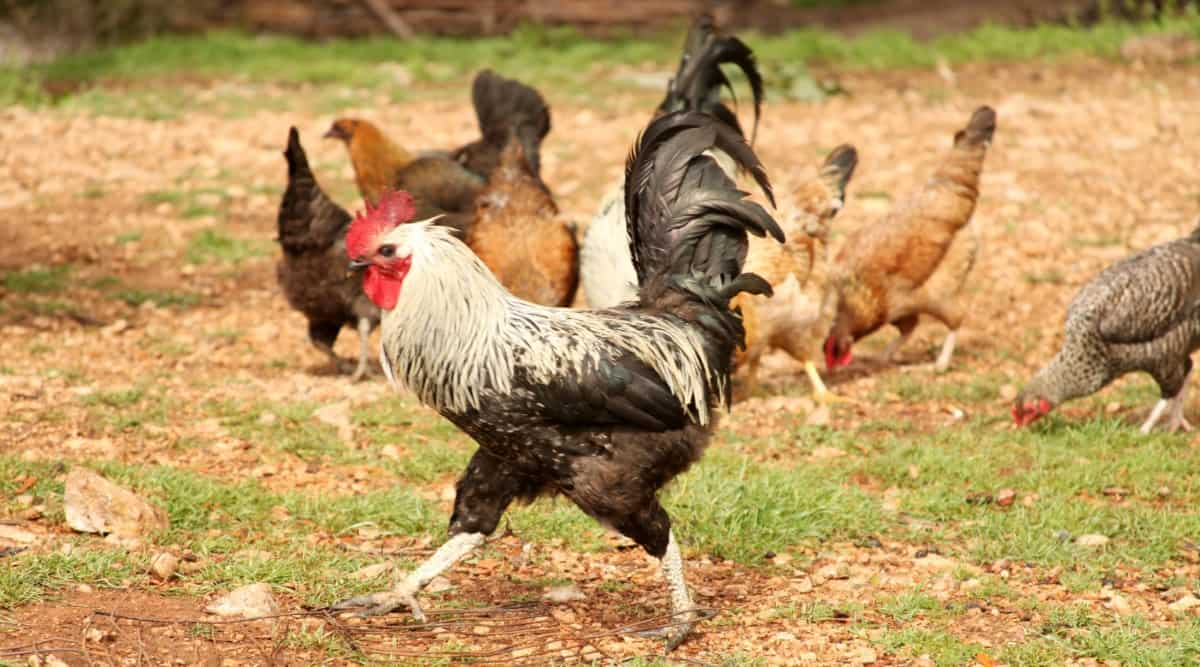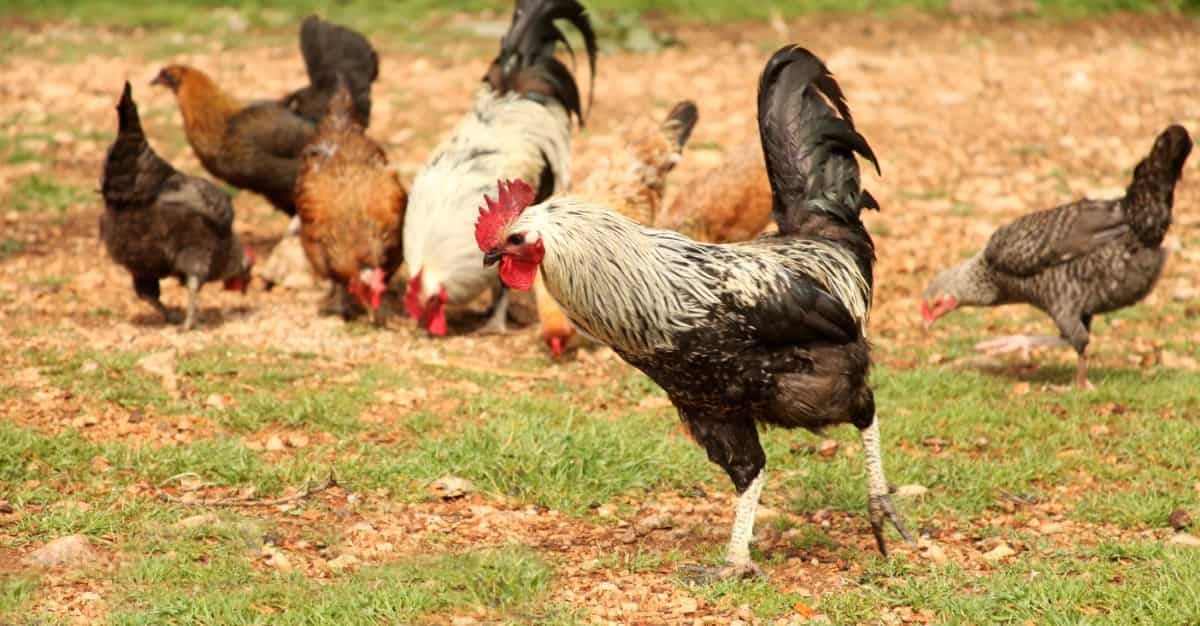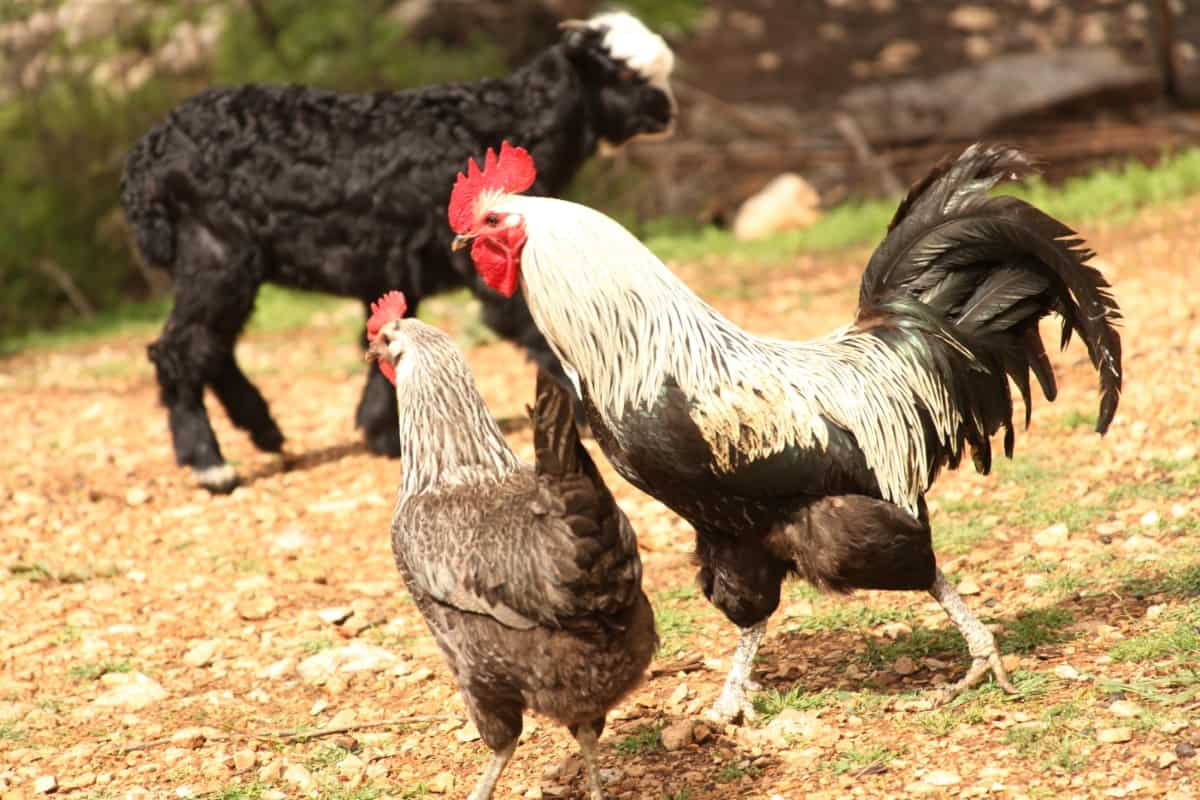Originating from North Carolina, Clement Grey Gamefowl was developed through meticulous breeding practices. Honing their traits for resilience and combat prowess, breeders sought to create a formidable strain prized in cockfighting circles.

All You Need to Know About Clement Grey Gamefowl
Clement Grey Gamefowl Characteristics: Clement Greys are known for their sleek, athletic build, sharp agility, and tenacious fighting spirit. They boast a distinctive grey plumage with hints of blue, exemplifying their regal bearing and striking presence.
Price: Typically, Clement Grey Gamefowl command a premium price due to their rarity and esteemed lineage. Clement Grey gamefowl costs range from $230 to 250 per bird, depending on factors such as pedigree, age, and physical condition.
Lifespan: Under optimal conditions and care, Clement Grey Gamefowl can live for 8 to 10 years. Proper nutrition, housing, and health maintenance are crucial factors in maximizing their lifespan and ensuring their well-being throughout their years.
Physical Attributes
Description of Appearance
Clement Grey Gamefowl exhibit a striking appearance characterized by their sleek, muscular build and elegant posture. Their medium-sized bodies are adorned with glossy, steel-grey plumage, often accentuated by subtle hints of blue or silver. Their long, slender necks hold proud heads adorned with bright, alert eyes and a distinctively curved beak. These gamefowl possess powerful legs equipped with sharp spurs, ideal for their combative nature.
Unique Physical Traits
One notable trait of Clement Grey Gamefowl is their exceptional agility, facilitated by their streamlined physique and well-developed musculature. This agility allows them to maneuver in combat swiftly, evading opponents’ strikes while delivering precise counterattacks. Additionally, Clement Greys are renowned for their resilient plumage, which provides effective protection during skirmishes, minimizing injuries. Their sharp, curved spurs are another distinctive feature, serving as formidable weapons in battle.
Clement Grey Bloodline History And Genetics
The Foundation of Clement Grey Bloodline
The Clement Grey bloodline traces its origins to a deliberate crossbreeding effort in North Carolina. Breeders meticulously selected and crossed various strains, including Mugs, Hatch, and Albany, aiming to enhance traits such as strength, endurance, and fighting spirit. Through generations of selective breeding, a distinct lineage emerged, characterized by its steel-grey plumage, agility, and tenacity in combat.
Clement Grey Gamefowl Temperament And Behavior
Behavioral Traits
Clement Grey Gamefowl exhibit a bold and assertive demeanor, characterized by their fierce territoriality and competitive spirit. They are known for their high energy levels and assertive nature, often displaying dominance within their flock. Despite their combative instincts, they can also demonstrate loyalty and affection towards their caretakers, forming strong bonds with those who handle them regularly.
Compatibility with Other Bloodlines
Due to their assertive nature and competitive drive, Clement Grey Gamefowl may exhibit varying degrees of compatibility with other bloodlines. While they can coexist peacefully with compatible breeds that share similar temperament traits, conflicts may arise when housed with more passive or submissive breeds. Proper socialization and careful monitoring are essential when introducing Clement Greys to other birds to minimize potential aggression and ensure harmonious cohabitation.
Clement Grey Fighting Style
Overview of Fighting Techniques
Clement Grey Gamefowl are renowned for their aggressive and relentless fighting style, characterized by their lightning-fast strikes and evasive maneuvers. They excel in close combat, utilizing their agility and speed to deliver precise blows while swiftly dodging opponents’ attacks.
Strengths and Weaknesses in Combat
In combat, Clement Grey Gamefowl possess formidable strengths, including exceptional agility, sharp spurs, and unwavering determination. They excel in close-quarters combat, utilizing their speed and agility to outmaneuver opponents and deliver devastating blows. However, their aggressive nature can sometimes lead to recklessness, leaving them vulnerable to counterattacks.
In case you missed it: Lavender Orpington Chickens: All You Need to Know

Training and Conditioning
Preparing for Competition
Preparing Clement Grey Gamefowl for competition involves a rigorous training regimen focused on enhancing their physical strength, agility, and fighting prowess. This includes daily exercise routines, such as free-ranging or treadmill sessions, to build stamina and endurance. Additionally, specialized training drills simulate combat scenarios, honing their fighting instincts and tactics.
Conditioning Programs Specific to Clement Greys
These programs typically incorporate high-intensity interval training techniques for Clement Grey Gamefowl to enhance cardiovascular fitness and endurance, which is crucial for sustained performance during matches. Feather conditioning, achieved through controlled exposure to sunlight and proper grooming techniques, ensures the integrity of their plumage, enhancing both aesthetics and aerodynamics in flight. Dietary supplements may be administered to support muscle development and overall health, contributing to their peak physical condition on fight day.
Gamefowl Breeding Strategies for Clement Greys
Selective Breeding Practices
Breeders meticulously choose individuals with desirable traits, such as strength, agility, intelligence, and fighting spirit, to produce offspring that embody the breed standard. By carefully analyzing pedigrees and understanding genetic inheritance patterns, breeders can make informed decisions to enhance desired traits while minimizing undesirable ones. Through successive generations of selective breeding, breeders aim to improve the quality and performance of the breed.
Maintaining Bloodline Purity vs. Crossbreeding
Maintaining bloodline purity involves breeding only within the established lineage of Clement Greys, ensuring that offspring inherit the distinct characteristics and traits associated with the breed. This approach prioritizes the preservation of the breed’s genetic integrity and consistency in conformation and performance.
On the other hand, crossbreeding involves introducing genetic material from other breeds to achieve specific goals, such as enhancing vigor, introducing new traits, or addressing health concerns. While crossbreeding may offer opportunities for improvement or adaptation, it also carries the risk of diluting the unique attributes of the Clement Grey bloodline.
Care and Management
Nutritional Needs
Clement Grey Gamefowl require a balanced diet rich in high-quality protein, vitamins, and minerals to support their active lifestyle and optimize their performance in the cockpit. Best diets for Clement Grey Gamefowl consisting of a mix of grains, seeds, vegetables, and protein sources such as meat, fish, or legumes provide essential nutrients for muscle development, energy production, and overall health. Additionally, access to clean, fresh water to prevent dehydration and maintain proper hydration levels during periods of intense training and competition.
Health Management for Clement Grey Gamefowl
Regular health and wellness monitoring are essential aspects of caring for Clement Grey Gamefowl. This includes routine veterinary check-ups to assess overall health, detect any signs of illness or injury, and administer necessary vaccinations or treatments. Observing birds for changes in behavior, appetite, and physical appearance can help identify health issues early. Proper hygiene and sanitation practices in housing facilities are also vital in preventing the spread of diseases and maintaining optimal health and wellness for the flock.
In case you missed it: Homemade Feed Formulations for Chickens: Cost-Effective Starter to Finisher Feed Recipes

Clement Grey in Gamefowl Competitions
Performance and Achievements
Clement Grey Gamefowl have a long history of success in gamefowl competitions, showcasing their superior fighting abilities and competitive spirit in the cockpit. Over the years, Clement Greys have earned a reputation for their agility, endurance, and tenacity, often emerging victorious in matches against formidable opponents. Their impressive track record in the arena has cemented their status as one of the premier breeds sought after by cockfighters worldwide.
Strategies for Competitive Success
Breeders must selectively pair individuals with complementary traits to produce offspring with the potential for excellence in the cockpit. Training programs should focus on developing physical fitness, fighting skills, and mental fortitude, preparing birds to perform at their peak during matches. Additionally, strategic matchmaking ensures that Clement Greys are matched against opponents of similar skill levels, maximizing their chances of success in the arena.
Preservation and Future of the Clement Grey Bloodline
By adhering to selective breeding for Clement Grey Gamefowl practices, preserving bloodline purity, and prioritizing the welfare and well-being of the birds, breeders can ensure the continued success and relevance of Clement Grey Gamefowl in the world of gamefowl competitions. Additionally, fostering community engagement, sharing knowledge, and advocating for responsible breeding practices contribute to safeguarding the long-term viability and sustainability of the breed for future generations.
Conclusion
Raising Clement Grey Gamefowl stands as a testament to the history and enduring legacy of North Carolina’s cockfighting tradition. Though their premium price reflects their rarity, their 8 to 10-year lifespan ensures ample opportunity to appreciate their remarkable qualities and contributions to the world of gamefowl.
Note: The images presented in this post are intended solely for representation purposes. The images are meant to serve as visual aids and should not be relied upon as accurate representations of their real-life counterparts.
- Feed Your Flock for Less: Top 10 Tips to Save on Chicken Feed
- Ultimate Guide to Ossabaw Island Hog: Breeding, Raising, Diet, and Care
- Hatching Answers: The Top 10 Reasons Your Chickens Aren’t Laying Eggs
- Eggs and Economics: Breaking Down the Cost of Raising Backyard Chickens
- Defend Your Greens: Proven Methods to Keep Iguanas Out of Your Garden
- Ultimate Guide to Cinnamon Queen Chicken: A Comprehensive Guide for Beginners
- Ultimate Guide to California Tan Chicken: Breeding, Raising, Diet, Egg-Production and Care
- Ultimate Guide to Marsh Daisy Chicken: Breeding, Raising, Diet, and Care
- 10 Types of Chicken Farming Businesses You Can Start for Profits